Introduction
Few literatures explicitly explain the difference between contemporary art and digital art. However, there is no doubt regarding the fact that both forms of art represent different eras in the history of art. Smith explains that contemporary art is a collection of art works produced after the Second World War1. The following picture is an example of contemporary art
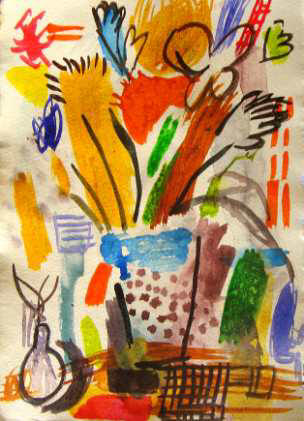
Digital art has been closely compared with contemporary art. Miller explains that digital art is “a general term for a range of artistic works and practices that use digital technology as an essential part of the creative and/or presentation process”2. There are many examples of digital art, including scanned images, photos (or images) modified by the computer, and 3D photos created by computer softwares (among others). Compared to figure one, it is easy to spot the difference between the digital work below and contemporary arts (as shown in figure one above).

Proponents of digital art propose that it is authentic because it involves a lot of creativity. Similarly, they also explain that digital art follows the basic principles and philosophies of art[1]. Nonetheless, through the transition and revolution of artworks between the 20th and 21st centuries, the difference between contemporary art and digital art has become increasingly ambiguous. The main basis for the fade-in distinction between these two forms of art is the merging characteristics between them and popular culture[2].
This paper recognizes this ambiguity but it seeks to further understand the two forms of art by discussing key elements in the museums of contemporary and digital arts. In the same light, this paper also explains the difference between other museums and the museums of digital and contemporary art. Through this analysis, the first museums of contemporary and digital art (plus what makes digital art unique to contemporary art) are explained. To support the findings of this paper, an explanation of when digital art and contemporary art became popular in culture is investigated but first, this paper explains the history of digital and contemporary art, plus the key dates in their history (including what they produced).
History of Digital and Contemporary Art
Contemporary Art
(the 1960s)
Visual Arts explains that the history of contemporary art can be traced to the 1960s era when the main ideology regarding art was that, art is a concept rather than a material piece[3]. The main outcome of this ideology was the birth of conceptualism. Conceptualism thrived on the notion that ideas can be communicated through conceptual art. Consequently, the conceptual art movement acted as a powerful socio-political movement of the 1960s. Evidence can be given of the large collection of shows at the Holocaust Museum in Washington where the boots of Nazi victims were gathered as a reminder of the horrific experiences Jews lived through[4]. Other art movements that stemmed from the history of contemporary art (during the 1960s period) were performance, installation, and minimalism. These movements mainly characterize the evolution of contemporary art through the 1960s era.
(1960-1970)
In the history of contemporary art, the 1960-1970 periods resulted in the birth of the photo-realism period. The photo-realism movement was characterized by detailed artworks that depict people or objects in sensitive details (which almost resembled photographs)[5]. The following picture represents a sample of a photo-realist’s art
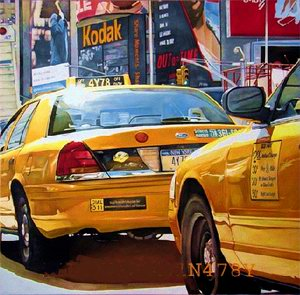
Clearly, the main focus of this movement was ‘detail’ and ‘precision’. However, this movement was largely criticized by the fact that its focus on ‘precision’ and ‘detail’ could easily create an unreal effect3.
(1970-onwards)
In the 1970 period, contemporary art gave birth to the graffiti-era. This movement was mainly associated with hip hop music and it mainly gained acceptance in major American cities such as New York. The main tools of this art movement were stencils, aerosol spray cans, market pens (and the likes). Some of the first pioneers in this movement were TAKI 183 (tag name) and Barbara 62 (also a tag name)4. In the late 80s and early 90s, other artists such as Jean-Michel Basquiat joined the graffiti movement. Art galleries such as B5 gallery now play host to many graffiti works.
(1980s era)
In the 1980s era, several forms of contemporary arts emerged, including neo-expressionism, Britart (for young British artists) and Neo-pop art. The Neo-pop art movement drew its inspiration from iconic figures such as celebrities (Michael Jackson, Madonna and the likes). The following artwork is an example
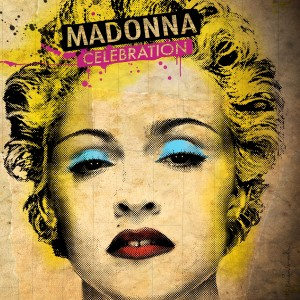
Britart art mainly gained recognition through the Senstation exhibition in 19975. Finally, neo-expressionism embraced a ‘dead’ practice of fine art paintings.
(1990s era)
The stuckism-era mainly characterized the evolution of contemporary art through the 90s era. Artists who supported this movement favored the opinion that painterly qualities (shown through figurative paintings) and other forms should be embraced. Many stuckist art works were exhibited in Britain. Some notable artists of this movement were Billy childish, Charles Thomson and Bill Lewis (among others)6.
(2000 onwards)
The New Leipzig school movement characterizes the evolution of contemporary art through the 2000s period. This movement was mainly characterized by the works of several young Germans whose training was different from other western forms of training. Traditional art principles are emphasized in this movement, with a sharp focus on draftsmanship, figure drawing and life drawing (among other important art principles of art). The following artwork is an example
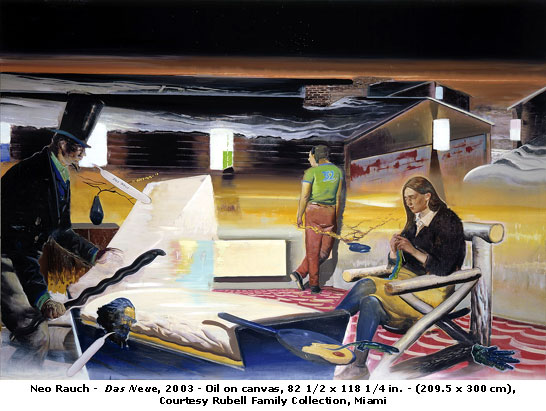
The product of such works is characterized by a sharp focus on narrative (plus muted colors). David Zwirner is a contemporary artist of this movement7.
Digital Art
1970s
Unlike contemporary art, digital art traces its roots to the start of the digital age. According to Bentkowska-Kafel, this digital age started around the 1970 period8. Digital Art Empire explains that digital art was founded when the first IBM computer was produced9. The first digital picture to be produced was made using the IBM computer and it was of poor quality. The following image is an example
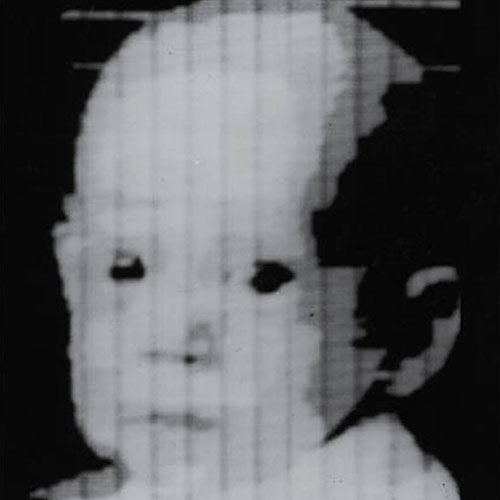
Since then, technology has progressed quickly and the clarity of pictures has significantly increased. Similarly, digital tools used to produce digital art have become very sophisticated. What we consider today as digital art did not materialize until the inception of computer programs that added color, fancy images, and games to different works of art[1]. This progress heralded a new age in digital art.
The 1980s
The 1980s period marked a new age in digital art. Creativity was at the helm of this evolution because different computer programs were used to produce almost life-like pictures. This was progress from the 1970 images. The printers used to produce the almost life-like images were mainly very expensive and bulky. Few people could afford them. However, artists from Soho saw the potential in these digital works of art and started creating images with digital printers[2].
The 1990s
Through the contribution of Soho artists, digital art evolved into an “active medium”. Through this progress, the first artists in digital art mounted huge screens and started showing live works of art in galleries. The following picture is a depiction of this showcase
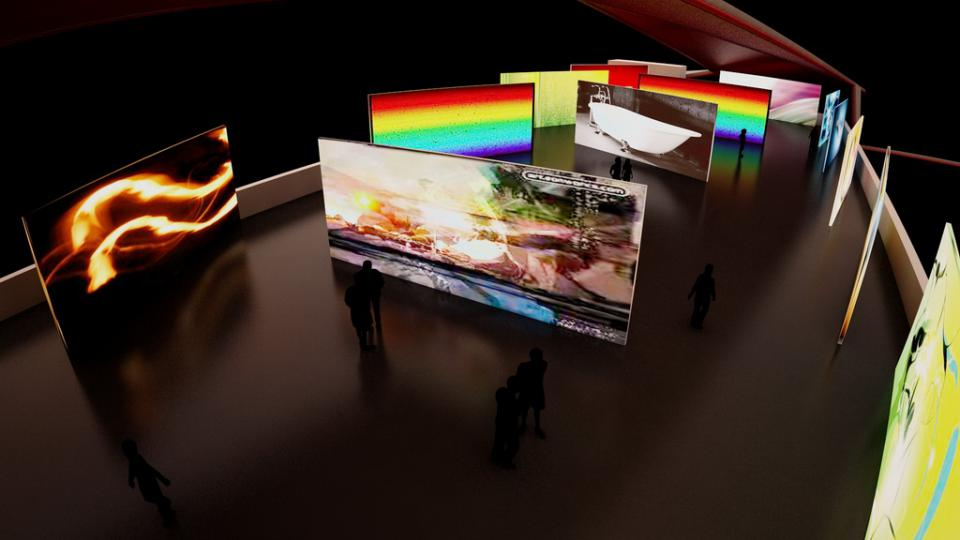
Most of the photos exhibited through this medium were still, but digital videos provided live action to the audience.
2000s
In the 2000s period there has been a lot of craze regarding the recreation of past works through digital filters to create modern photos that appeal to the modern generation. In the 2000s period, a rapid explosion of modern art has drawn a lot of commercial interest. The main distinction between the 2000s period and earlier periods of digital art is that there is adequate technology to transform average digital photos into impressionable works of arts (usually paintings)10. The following image is an example
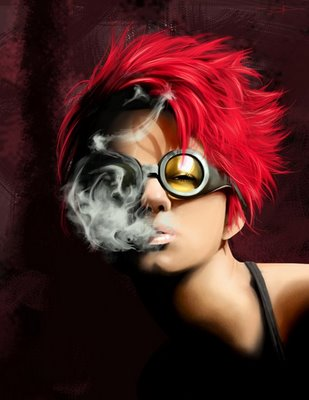
Usually, a standard filter and an exceptional photo would do the trick. The commercial viability of this process has been outstanding because using this method with an exceptional color printer produces customized paintings. Artists who have tried this method have produced artistic masterpieces. These works of art have created a huge demand because when they are printed out of the canvas, they produce very impressionable digital works. Comprehensively, we can see that digital art has evolved through the decades to become a heavily commercialized sector. The commercialization of art prompts the question regarding when contemporary art and digital art became popular in culture.
Popular Artists from Contemporary and Digital Art
Contemporary Artists
Pablo Picasso and Jean-Michel Basquiat are among the greatest contemporary artists of all time. Picasso was accredited to have greatly contributed to western painting. Among his greatest works of art was the Avant-Garde[1]. The Avant-garde was synonymously used to refer to works that were largely adventurous or experimental. Picasso’s works were therefore perceived to be non-conformal (to the norm). To some people, Picasso’s contribution to art (notably Avant-garde) marked the hallmark of modernism in art[2].
Jean-Michel Basquiat was among the first artists to introduce street art as a form of contemporary art. He started his work in New York (in the late 1970s) after which he quickly grew to be a neo-expressionist painter. Among his greatest contributions to art was the introduction of the SAMO movement[3]. This movement included the inscription of messages on different buildings in lower Manhattan. Mainly the SAMO movement was a political and poetic movement that depicted child-like fascinations. The following art piece was obtained from Basquiat’s art collection
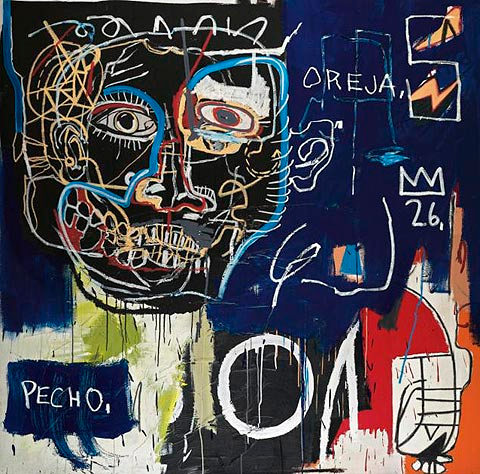
In 1988, the artist died from a heroin overdose11.
Digital Artists
Josh Smith and Pete Harrison are some of the most notable digital artists today. Smith is an artist from New York who is infamously known for producing digital works that bear his name12. Many of Smith’s works center on the concepts of ‘authorship’ and ‘originality’. Some of his works have been inspired by other artists such as Andy Warhol13. Pete Harrison is also another influential digital artist who hails from the UK. Most of Harrison’s works are rendered “with the deadly, but dazzling colored illuminations”14. His main contribution to digital art is the introduction of desktopography. The concept of desktopography mainly centered on creating arts from nature. The following picture is a representation of his work

The popularity of Digital and Contemporary Art
The popularity of digital art is partially highlighted in earlier sections of this paper through the successful commercialization of digital art in recent years. Indeed, it is only until recently that digital art has gained prominence in society[1]. The spread of the internet has played a huge role in improving the profile of digital art. In addition, the proliferation of electronic devices (digital gadgets) has also facilitated the spread and creation of digital art. For example, many people today have a digital camera or a mobile phone that can take pictures and upload them online. Digital art is quickly gaining ground today as an important tenet of the internet. For example graphics, pixels, and different forms of motion pictures form a significant portion of all internet media[2].
Through the popularity of digital media, it is now common to find online photo galleries (through specialized websites). These photo galleries also show random pictures which have been taken using different digital devices. Usually, the main variant is one’s interest (either in drawing or taking photos). The popularity of digital art in recent years has not only birthed online art galleries but also physical galleries that showcase different artifacts such as paintings, drawings, and abstracts.
New artists are often fond of frequenting such galleries so that they increase their presence in the art world[3]. However, comprehensively, we can say that the internet heralded new dawn to the popularity of digital art. New and upcoming artists can easily upload their artworks through a website and viewers can simply download different artworks. Nonetheless, the popularity of digital art has peaked (presently) and many organizations are even trying to set up digital art schools to cater to its growing demand[4].
Even though digital art has gained popularity in recent years, the popularity of contemporary art peaked in earlier years. Visual Arts explains that the popularity of contemporary art peaked in the 90s[5]. Specifically, the advent of street art is cited as the main contributor to the increased popularity of this art form. Indeed, street art changed the whole dynamics of contemporary art because it shifted the production of contemporary art from workplaces or home surroundings to more public places (the streets)[6]. The following art piece is an example of a modern street art
[1] R Miller, Digital Art: Painting With Pixels, Twenty-First Century Books, New York, 2007.
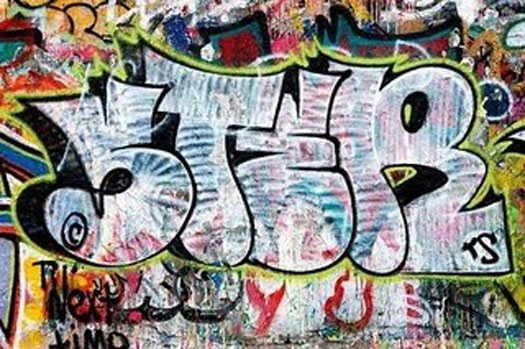
From increased publicity of street art, there has been a consistent increase in the number of street artists not only in America or Europe but also in other parts of the world. Alec Monopoly is one example of the new crop of artists that have taken contemporary art to another level (through street art)[1].
His works can be found in different parts of the world including London, Los Angeles, and New York. Another basis for the widespread popularity of contemporary art (through street art) is the practicality of the themes expressed in these art forms. For example, many forms of street art have discussed social ills and the underpinnings of the political system. For example, Alec Monopoly criticizes the government for not caring for the welfare of its people by allowing commercial and multinational corporations to have their way with them[2]. Such themes have grasped the attention of the public and as such, created a lot of commercial interest.
The Uniqueness of Digital Art (viz-a-viz Contemporary Art)
Through the description of contemporary art (art produced after the Second World War to date), we see that digital art is still part of contemporary art. However, with the widespread criticism of digital art, we see that there is a lot of debate regarding whether digital art will gain the same respect as other contemporary arts[3]. At the center of this debate are the unique characteristics of digital art that make it different from contemporary art. The ability to reproduce digital art is one example of the uniqueness of digital art which makes it different from contemporary art. Often, contemporary artworks take a lot of time and effort to make. When the final product is produced, it is impossible to reproduce it. People may photograph such works with the best digital devices but they cannot truly reproduce the same artworks.
Digital art is also unique to the fact that digital artists do not necessarily have to know how to make impressionable pieces of art because they only need to understand how to use a computer program to achieve the desired results[4]. On the other hand, to create impressionable contemporary works, an artist needs to understand the principles and philosophies of traditional art that make them impressionable. In digital art, the computer does this for you.
The fact that digital artists can undo and redo a given piece of art also makes them unique to contemporary artists because digital artists can easily redo a given piece of work until they achieve the desired results. The same process cannot be replicated in contemporary arts because once a process is done, it cannot be redone[5]. Here, we can see that digital art is unique to other forms of contemporary art because of its flexibility. Even though contemporary arts have more complicated and articulate rules of production, the quality of digital arts can still match up to contemporary art.
First Museums of Contemporary Art and Digital Art
With the evolution of contemporary and digital art, many museums have been introduced to showcase these works of art. After the proliferation of digital artworks in the USA and a subsequent lack of a platform to showcase such works, the Austin Museum of Digital Art in Texas (USA) was set up to showcase these works[6]. The following picture was taken inside the art museum
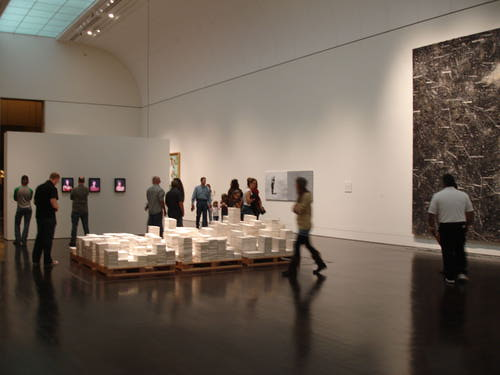
The museum was setup in 1997. On the other hand, it is believed that the first contemporary art museum was the Holocaust museum in Washington D.C15. As explained in earlier sections of this study, this museum showcased different contemporary works including art from the Nazi era. The following snapshot represents the museum’s building

Elements in the Museums of Contemporary and Digital Art
As explained in earlier sections of this paper, contemporary art museums are among the most significant forms of art institutions in the world today. They not only bridge artists’ works but also provide a platform where the creators of the artworks and their audience effectively meet[1]. Some of the key elements of contemporary art museums are that they act as a collection point for local and international works of art. They also consider the local context as a basis for synchronizing the local culture with art. These museums also act as an educational platform to enlighten the audience about the showcased artworks. Such contemporary art museums achieve this objective by merging educational rules elements, exhibition elements, and museum communication elements[2].
The key elements in the museums of digital art do not vary much from the key elements in the museums of contemporary art. However, the main distinction between these two works of art is that digital art mainly tends to focus more on future technologies while contemporary art focuses more on past artworks [3]. Digital art museums also tend to rely a lot on software (although not entirely) because software acts as the main platform for interaction between the artists and the audience[4].
Difference between other Museums and Museums of Digital and Contemporary Art
Museums of digital and contemporary art are a fair representation of modern art museums. Works from other museums were mainly opened to staff and in-house visitors but museums of digital and contemporary art have changed this perception. Now, it is possible to make a virtual visit to such museums[5]. The following image shows virtual access to artistic contents

The ‘online access’ is seen to make contemporary and digital art museums more democratic than other museums. In addition, as opposed to other museums, contemporary and digital art museums have digital content for showcasing. This means that their array of artifacts is broader than other museums. Modern forms of digital and contemporary art museums do not also have a definite time for closing or opening. Some of these museums are open for 24 hours and visitors can access such artworks without having to seek the assistance of staff or even paying the entry fees. Other museums have a predetermined opening and closing time. The entrance fee is also almost mandatory.
Conclusion
After weighing the findings of this paper, we see that digital art and contemporary art share a few common characteristics (although they also differ in certain respects). The history of digital art is still in our grasp and everybody is trying to be on board. As such, digital art has received wide commercial success. On the other hand, the popularity of contemporary art peaked in the 90s. Now, both forms of art are slowly merging their characteristics because of their association with popular culture. The distinctions between digital and contemporary art have also been mirrored in the characteristics of contemporary and digital art museums. However, going forward, the advancement in technology is going to have a strong impact on both forms of art.
Bibliography
Bentkowska-Kafel, A, Digital Art History: A Subject in Transition, Intellect Books, New York, 2005.
Digital Art Empire, A Brief History of Digital Art, Digital Art Empire, 2012. Web.
Lorente, P, The Museums of Contemporary Art: Notion and Development, Ashgate Publishing, Ltd., London, 2011.
Miller, R, Digital Art: Painting With Pixels, Twenty-First Century Books, New York, 2007.
Smith, T, What Is Contemporary Art, University of Chicago Press, Chicago, 2009.
Visual Arts, Contemporary Art Movements, Encyclopedia of Art, 2012. Web.
Footnotes
- T Smith, What Is Contemporary Art, University of Chicago Press, Chicago, 2009.
- R Miller, Digital Art: Painting With Pixels, Twenty-First Century Books, New York, 2007, p. 25.
- Visual Arts, Contemporary Art Movements, Encyclopedia of Art, 2012. Web.
- Visual Arts, Contemporary Art Movements, Encyclopedia of Art, 2012. Web.
- Visual Arts, Contemporary Art Movements, Encyclopedia of Art, 2012. Web.
- Visual Arts, Contemporary Art Movements, Encyclopedia of Art, 2012. Web.
- Visual Arts, Contemporary Art Movements, Encyclopedia of Art, 2012. Web.
- A Bentkowska-Kafel, Digital Art History: A Subject in Transition, Intellect Books, New York, 2005.
- Digital Art Empire, A Brief History of Digital Art, Digital Art Empire, 2012. Web.
- A Bentkowska-Kafel, Digital Art History: A Subject in Transition, Intellect Books, New York, 2005.
- T Smith, What Is Contemporary Art, University of Chicago Press, Chicago, 2009.
- R Miller, Digital Art: Painting With Pixels, Twenty-First Century Books, New York, 2007.
- R Miller, Digital Art: Painting With Pixels, Twenty-First Century Books, New York, 2007.
- R Miller, Digital Art: Painting With Pixels, Twenty-First Century Books, New York, 2007, p. 4.
- P Lorente, The Museums of Contemporary Art: Notion and Development, Ashgate Publishing, Ltd., London, 2011.